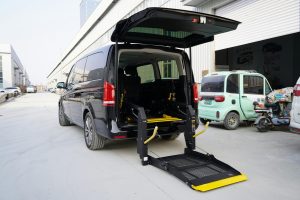Autonomous Public Transit: Reimagining Urban Commuting
Urban commuting has always been a major challenge for city dwellers. Traffic congestion, long travel times, and crowded public transportation systems make daily commutes a dreaded experience. But what if there was a solution that could revolutionize urban commuting? Enter autonomous public transit. This cutting-edge technology promises to transform how we move around our cities by offering a new level of convenience, efficiency, and sustainability. In this article, we will explore how autonomous public transit is reshaping the future of urban commuting.
The Rise of Autonomous Public Transit
Autonomous public transit, also known as self-driving or driverless transit, is a transportation system in which vehicles operate without a human driver. These vehicles are equipped with advanced sensors, cameras, and artificial intelligence technology to navigate the roads and transport passengers safely. While the concept of autonomous vehicles is not new, the use of this technology in public transit is a relatively recent development.
The first autonomous public transit system was launched in the city of Caen, France, in 2005. Since then, cities around the world, including Singapore, Dubai, and Beijing, have implemented pilot programs and trials of autonomous public transit. With advancements in technology and growing concerns about air pollution and traffic congestion, the demand for autonomous public transit is on the rise.
Advantages of Autonomous Public Transit
One of the most significant advantages of autonomous public transit is its potential to reduce traffic congestion. With self-driving vehicles operating on designated routes, traffic flow can be optimized, leading to reduced travel times and fewer delays. This can also have a positive impact on air quality, as less time spent idling in traffic means fewer emissions.
Another benefit of autonomous public transit is enhanced safety. Human error is a contributing factor in many road accidents, and the use of autonomous vehicles can significantly reduce these incidents. Self-driving vehicles are equipped with advanced safety features and can potentially react faster and more accurately to avoid collisions.
Furthermore, autonomous public transit has the potential to improve accessibility. Traditional public transportation systems often have limited routes and schedules, making it challenging for some individuals, such as the elderly or those with disabilities, to travel independently. With autonomous vehicles, passengers can request a ride from any location, and the vehicle will take them directly to their destination.
Reimagining the Commuting Experience
Autonomous public transit is not just about replacing traditional buses and trains. It also presents an opportunity to reimagine the entire urban commuting experience. With the use of technology, passengers can have a more personalized and convenient experience. For example, passengers can book their ride through a mobile app, track the vehicle’s location in real-time, and even customize their trip preferences, such as temperature and music.
Moreover, autonomous public transit can also integrate with other forms of transportation, such as bike-sharing and ride-hailing services. This multimodal approach to transportation can provide a seamless and efficient journey for passengers, making it easier to navigate the city.
The Road Ahead
While the potential of autonomous public transit is significant, there are still challenges to be addressed before it becomes a widespread reality. One of the main challenges is safety and building public trust in the technology. As with any new innovation, there will be a learning curve, and it will take time for people to feel comfortable riding in autonomous vehicles.
Regulations and policies also need to be developed to ensure the safe and responsible use of autonomous public transit. This includes addressing ethical concerns, such as liability and data privacy.
The Future is Autonomous
As we look towards the future, it’s clear that autonomous public transit has the potential to revolutionize urban commuting. With its ability to reduce traffic congestion, improve safety, and enhance the passenger experience, it’s no wonder that many cities are investing in this technology. And as advancements continue to be made, we can expect to see a significant shift in how we move around our cities, making our daily commutes more efficient, sustainable, and enjoyable.
The new era of autonomous public transit is upon us, and it’s time to embrace this exciting change and reimagine urban commuting for the better.











